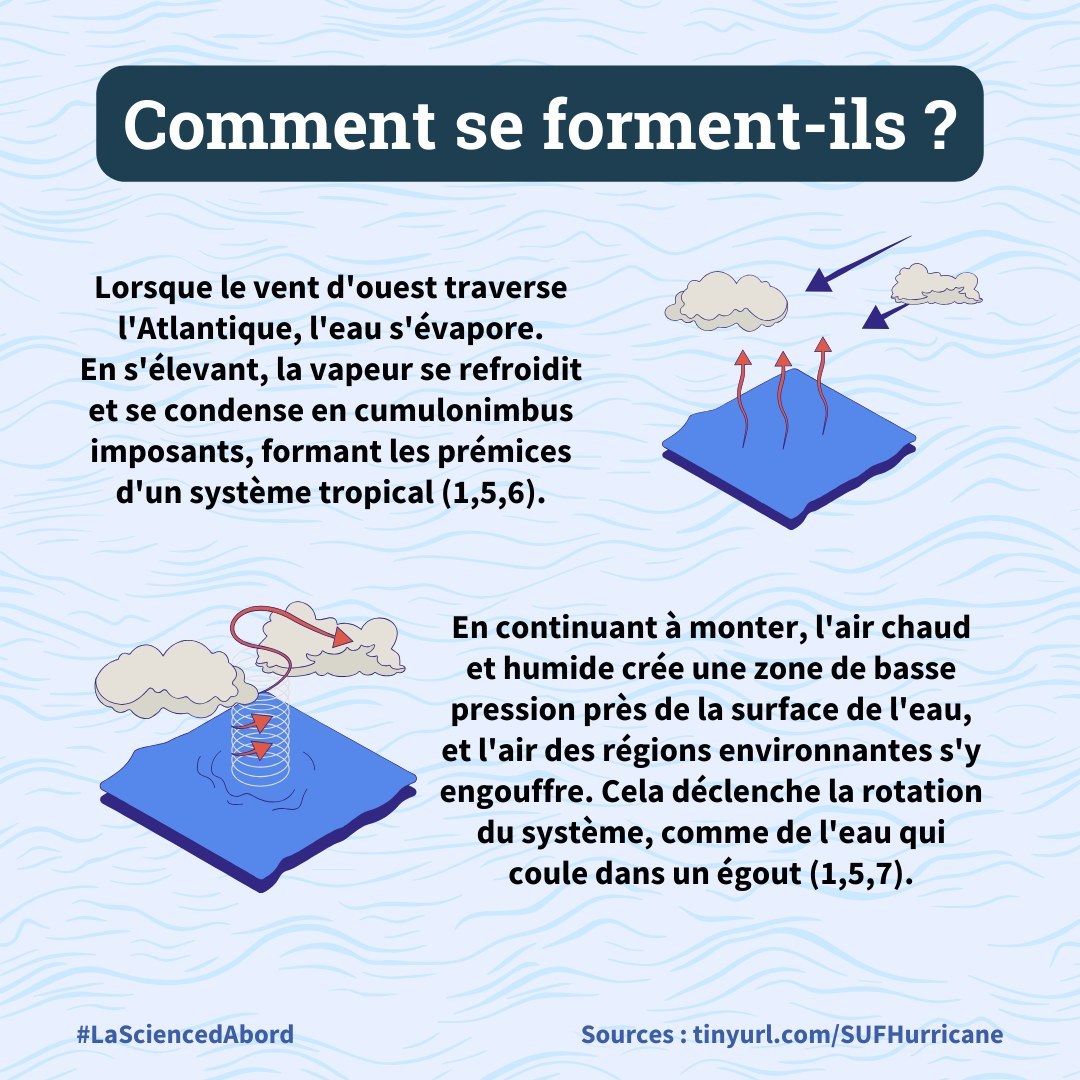






Nous arrivons à la fin d’une saison des ouragans extrêmement active et, cette année, la désinformation autour de ces phénomènes météorologiques extrêmes s’est accrue.
Reprenons quelques notions de base sur les ouragans afin de mieux comprendre comment ils se forment et ce qui les alimente.
Quel phénomène météorologique devrions-nous démystifier ensuite ?
- How Does a Hurricane Form? | NOAA SciJinks – All About Weather | September 2024
- Tropical Cyclone Climatology | National Hurricane Center and Central Pacific Hurricane Center
- Hurricanes | National Oceanic and Atmospheric Administration | May 2020
- Hurricane Damage | Center for Science Education
- Tropical Cyclone Introduction | National Oceanic and Atmospheric Administration
- See how cloud formation near a low-pressure system or ongoing tropical storm fuels a hurricane | Britannica
- How Do Hurricanes Form? | NASA Space Place – NASA Science for Kids | September 2019
- Hurricanes and Climate Change | Center for climate and energy solutions
- A Force of Nature: Hurricanes in a Changing Climate | NASA Science | June 2022
- How climate change makes hurricanes more destructive | Environmental Defense Fund
- Global Warming and Hurricanes | Geophysical Fluid Dynamics Laboratory
- 2022 Technical Report | Resources | U.S. Sea Level Change
- What Is the Coriolis Effect? | NOAA SciJinks – All About Weather | September 2024
- The Coriolis Effect – Currents: NOAA’s National Ocean Service Education | National Ocean Service National Oceanic and Atmospheric Administration
- The Coriolis Effect: Earth’s Rotation and Its Effect on Weather | National Geographic
- How Hurricanes Form | Center for Science Education
- Why Don’t Hurricanes Happen at the Equator | Science Museum of Virginia | September 2024
- Why Hurricanes Almost Never Form Near Or Cross The Equator | Forbes | June 2018
Partagez notre tweet original !
Nous arrivons à la fin d'une saison des ouragans extrêmement active et, cette année, la désinformation autour de ces phénomènes météorologiques extrêmes s'est accrue.
— LaSciencedAbord (@LaScienceDAbord) November 20, 2024
Reprenons quelques notions de base sur les ouragans 👉 https://t.co/ocJIf0zYVW#LaSciencedAbord pic.twitter.com/yuX3Z8YdXT
Voir notre post Instagram original !



